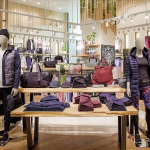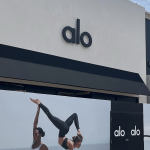As anticipated, Russell Corporation got a nice lift in Q2 from the sale of its minority position in Marmot Mountain, adding about $4 million, or roughly 8.5 cents per share, to the bottom line in the quarter. Excluding the gain, RML would have still seen a 10.4% increase in net income to $7.4 million, or 22 cents per diluted share.
On the other side of the coin, the acquisitions of AAI and Huffy Sports added $12.9 million, or nearly 59%, of the total revenue gain for the quarter and nearly 65% of the sales increase in the Domestic Athletic/Outdoor business.
Excluding acquisitions, Russell said the base Athletic/Outdoor business would have increased 9.0% for the period, due primarily to double-digit sales increases at Spalding and Mossy Oak, and the total business would have seen a 3.3% sales increase.
AAI is estimated to have annualized sales in the range of $20 million to $25 million, with approximately 50% to 60% of those sales on Russells watch. The Huffy backboard and inflatables business, which is estimated to have annualized sales of $65 million to $70 million, is expected to be dilutive by four cents to five cents per share in 2004 before becoming accretive next year.
Russell sees a good opportunity to get some if not all of the Sports Authority backboard business lost by Huffy last year to lower bids by Spalding and Lifetime.
RML chairman and CEO Jack Ward said that the license for the Spalding branded backboards is expiring at the end of this year. Ward sees going back after the business with product that has more room for negotiation as they take costs out of the Huffy business. He did say he did not expect to get into a pricing battle with Lifetime.
Huffy and AAI are rolling under Spalding and Ward said the final structure of that organization had not been determined, but indicated that “synergistic opportunities” would be expected.
Mr. Ward gave some additional insight into the reasoning for the Huffy and AAI acquisitions, pointing to a study conducted after they acquired Spalding in May of last year. They found that one of the highest priority opportunities was in basketball backboards and backboard systems. He said they looked at their options for the category and found that, due to the number of patents in the market, acquisition was the best way to go.
Ward said that Russell is now the largest supplier of basketball equipment in the world and indicated that they intend to convert a “significant portion” of the AAI and Huffy backboard product to either Spalding or a combination of Spalding and the current brand.
The Domestic Activewear business continues to be tough despite a new program at Target. The gains there were more than offset by pricing declines and the loss of a major spring program at Wal-Mart.
On the International front, benefits from FX rates represented “slightly less than half” of the 22% sales increase.
To drive home their opportunity with the broader brand stable, Russell also announced adding nine more schools to their roster of Historically Black Colleges through an agreement with the Mid-Eastern Athletic Conference in the Southeast. This brings to 30 the total number of schools Russell has signed in three HBC conferences.
The deal will see Russell supply athletic apparel, team uniforms, balls and sports equipment from its portfolio of brands. They will also have an exclusive deal to sell on-court/on-field product in the bookstores.
Russell is narrowing its fiscal 2004 full year EPS estimates to a range of $1.45 to $1.60 per diluted share, increasing the low end of its previous outlook, on sales in the range of $1.30 billion to $1.33 billion. RML had sales of $1.19 billion in 2003. The forecast is based on 6% to 8% growth from their existing businesses in the second half.
RML expects Q3 diluted EPS between 70 cents and 78 cents, which includes expenses of three cents to five cents from the Huffy Sports deal and other activities.
OTHER KEY METRICS:
- Excluding AAI, inventories were up about 5%.
- Huffy $30 mm acquisition funded through cash flow.
- Honduran facility will start operating Q1 2005.
- Honduras production is forecast to deliver $15 mm to $20 mm in savings by 2006.
- Cotton prices are expected to be “much lower” next year, back to 2003 levels.













